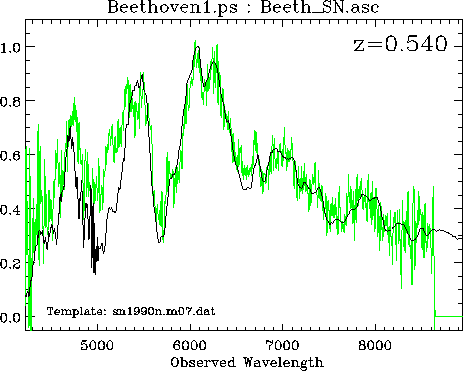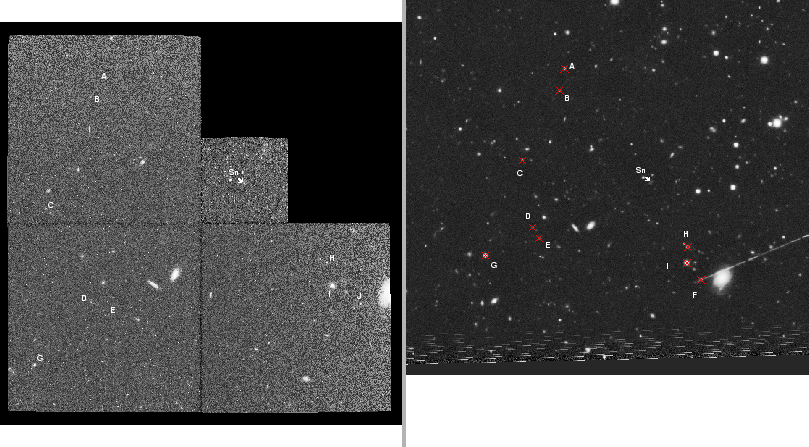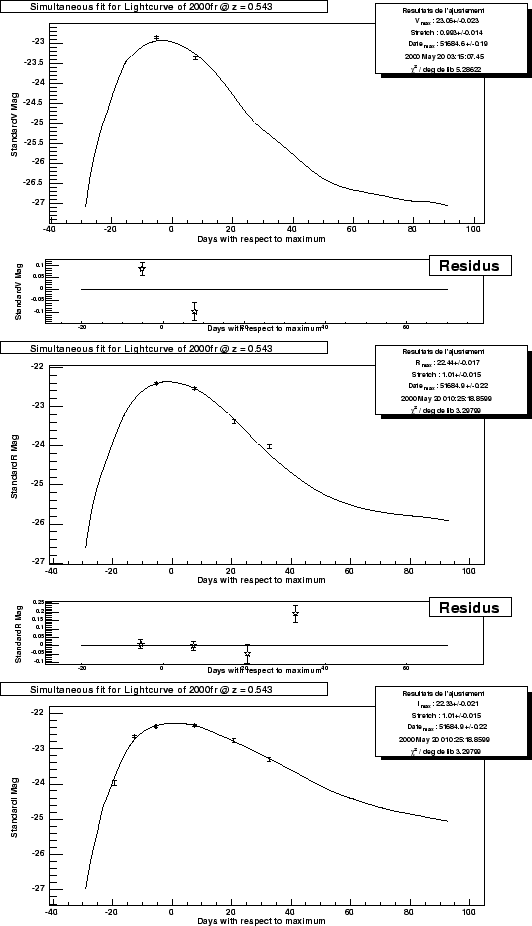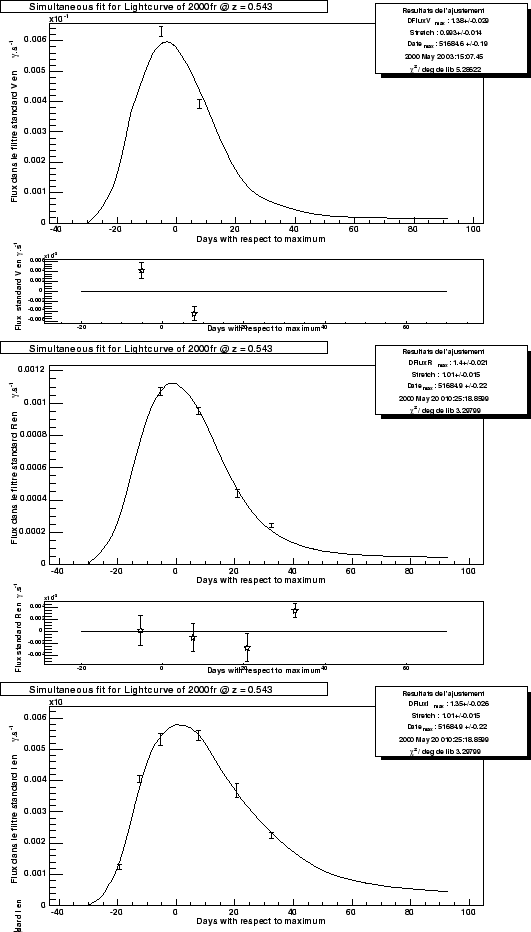Contents
This supernova was discovered with instrument CFH12K at the
time of the countryside of spring 2000 with the CFHT. It was discovered
20 days before its maximum of luminosity in the observant reference
frame (either 13 days before its maximum in its reference frame). This
made it possible to observe it under excellent conditions with the
space telescope Hubble. It thus gained from 6 observations out of I,
5 in R and 2 out of V (B.2 table ).
The spectroscopic identification was obtained thanks to the Fors-1
instrument of the VLT, the redshift was given starting
from the lines of its galaxy host (B.1 figure ).
Appear B.1: In green, the
spectrum of 2000fr in the reference frame of the observer. This
spectrum was observed by the VLT with instrument FORS1 on May 4, 2000.
The duration is 4800 seconds. Its redshift was estimated
by using the lines coming from its galaxy host. In black overprinting,
the spectrum of 1990N, supernova observed near 7 days before the
maximum.
 |
Appear B.2: Supernova
2000fr in band I observed by the Hubble telescope on the left and the
CFHT on the right, the magnitudes of some objects of the field are
presented in B.3 table .
 |
B.2 table: Summary of the observations with the space telescope Hubble of 2000fr.
| Instrument |
Go back to observationa |
filtreb |
Expositionc |
|
|
|
| HstWfpc2 |
51672.36 |
F814W |
2200 |
|
|
|
| HstWfpc2 |
51679.47 |
F814W |
1200 |
|
|
|
| HstWfpc2 |
51692.41 |
F814W |
1200 |
|
|
|
| HstWfpc2 |
51705.70 |
F814W |
800 |
|
|
|
| HstWfpc2 |
51717.48 |
F814W |
2300 |
|
|
|
| HstWfpc2 |
51733.29 |
F814W |
2300 |
|
|
|
| HstWfpc2 |
51679.48 |
F675W |
1200 |
|
|
|
| HstWfpc2 |
51692.41 |
F675W |
1200 |
|
|
|
| HstWfpc2 |
51705.76 |
F675W |
1000 |
|
|
|
| HstWfpc2 |
51717.54 |
F675W |
2400 |
|
|
|
| HstWfpc2 |
51733.36 |
F675W |
2400 |
|
|
|
| HstWfpc2 |
51679.49 |
F555W |
1300 |
|
|
|
| HstWfpc2 |
51692.43 |
F555W |
1300 |
|
|
|
aDate Julienne  corn name corresponds to the average wavelength of the filter in Nm cen second corn name corresponds to the average wavelength of the filter in Nm cen second |
B.3 table: Magnitudes of some stars of the field of 2000fr.
| Stars |
I |
R |
| With |
22.02  0.05 0.05 |
- |
| B |
21.79  0.05 0.05 |
- |
| C |
19.78  0.01 0.01 |
- |
| D |
21.04  0.28 0.28 |
- |
| E |
18.53  0.01 0.01 |
- |
| F |
20.68  0.01 0.01 |
- |
| G |
17.72  0.03 0.03 |
- |
| H |
21.77  0.07 0.07 |
- |
| I |
21.91  0.07 0.07 |
- |
|
B.4 table: Curve of light of 2000fr in the band V
|
|
B.5 table: Curve of light of 2000fr in the band R
|
|
B.6 table: Curve of light of 2000fr in band I
|
|
Appear B.3: Curves of light of 2000fr in standard magnitudes in the filters V, R and I
 |
Appear B.4: Curves of light of 2000fr in standard fluxes in the filters V, R and I
 |
Contents Julien Raux 2004-05-04


